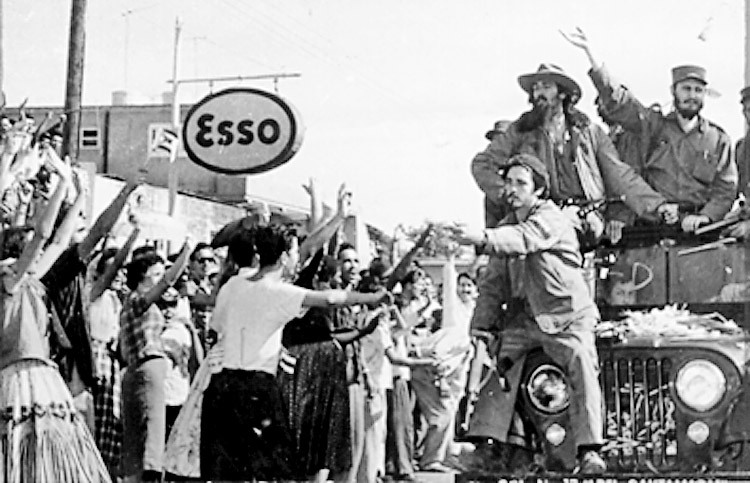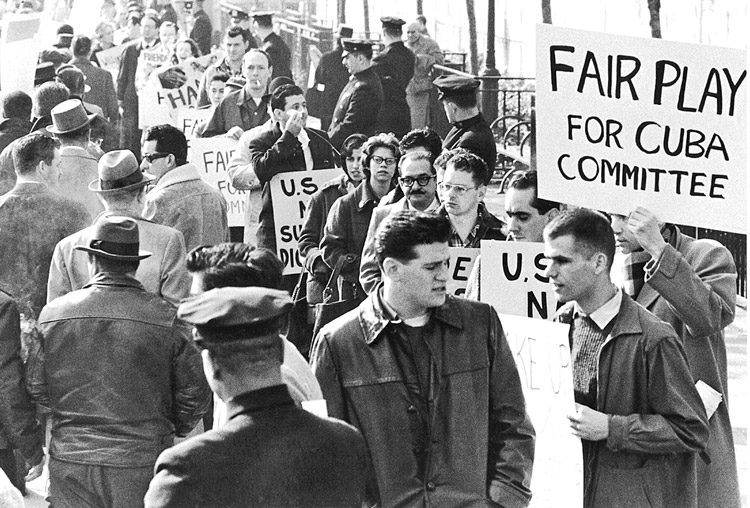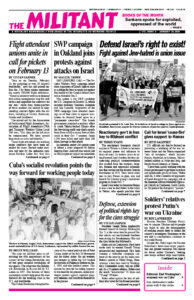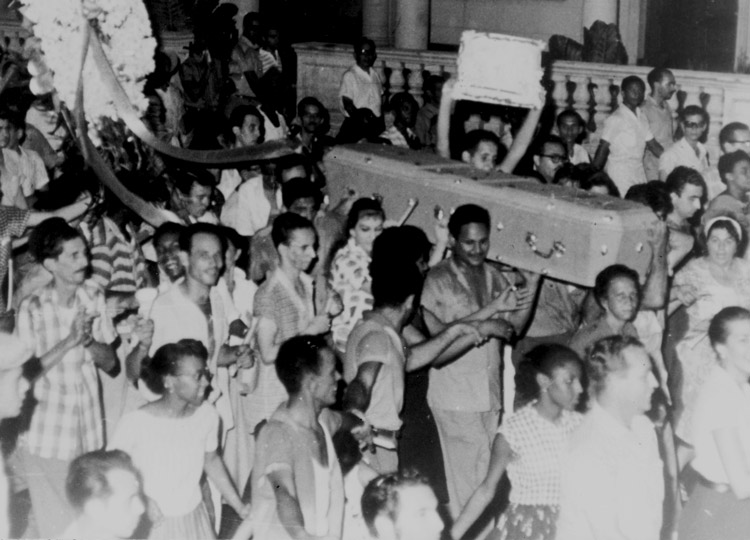This year the Militant joins in celebrating the 65th anniversary of the victory of the Cuban Revolution, one of two great socialist revolutions of our epoch. The other was the Bolshevik Revolution in Russia led by V.I. Lenin in 1917. The lessons of these momentous events help point the road forward for the working class in the U.S. and worldwide.
The Cuban Revolution triumphed because of the central political role of Fidel Castro, leader of the July 26 Movement and the Rebel Army. He led workers and farmers to defeat the U.S.-backed dictatorship of Fulgencio Batista on Jan. 1, 1959, and take political power. This opened the door for the toiling majority to win land for the peasants, make ever-deeper inroads against capitalist property relations, and transform themselves in the process.
The imperialist rulers in Washington responded by launching a six-decades-long campaign to try to destroy the revolution, carried out by Democratic and Republican administrations alike. They have carried out a relentless economic, trade, financial and political war against the working people of Cuba.
After Batista fled Cuba, some of his generals remained, planning a coup to hold onto power. But millions responded to Castro’s call for a general strike and Che Guevara led his army into Havana to seize the garrison. Castro also planned to get to Havana as rapidly as possible.
But as his Rebel Army column started out, “the people stopped me in the towns. I was not able to do anything else but speak with the people,” Castro said, in what became known as the Freedom Caravan.

“As we moved through towns and cities, I saw lots of men and women, hundreds and thousands of men and women with the red-and-black uniforms of the July 26 Movement. But many more thousands wore uniforms that weren’t black and red but were the work shirts of workers and farmers,” Castro said in a March 26, 1964, speech, describing the impact the Freedom Caravan had on him. Since that day, “I belonged to the people, to the revolution, because we had truly accomplished something that was greater than ourselves.”
This year, during the first week in January, a Caravan of Freedom is traveling across Cuba to commemorate this historic journey. The caravan is going through the same towns and cities Castro visited, greeting people in Las Tunas, Camaguey, Ciego de Avila and more.
Over the first two years after the triumph of the revolution, 100,000 landless peasants became landowners, with land guaranteed to all who wanted to farm it. The workers and farmers government carried out far-reaching nationalizations of industry and utilities, owned by U.S. companies and native capitalist alike, among other deep-going steps. Millions of working people were involved.
In the summer of 1960 thousands of young people from across the Americas and beyond attended the First Latin American Youth Congress in Havana. Among those participating was Jack Barnes, today national secretary of the Socialist Workers Party.
This revolution is ‘Marxist’
They were addressed by Cuban revolutionary leader Che Guevara, who posed the question, “Is this revolution communist?”
“I would answer that if this revolution is Marxist — and listen well that I say ‘Marxist’ — it is because it discovered, by its own methods, the road pointed out by Marx,” Guevara said.
“The Cuban Revolution was moving forward, not worrying about labels, not checking what others said about it, but constantly scrutinizing what the Cuban people wanted of it,” he said.

Writing in Cuba and the Coming American Revolution, Barnes noted, “Guevara’s explanation coincided well with the conclusions I was groping toward during that decisive summer, when all the major imperialist-owned industries in Cuba were nationalized by massive mobilizations of working people from one end of the island to the other.”
Barnes, who returned for his senior year at Carleton College in Minnesota, became one of the organizers of the Fair Play for Cuba Committee there. He wrote that he got a deeper understanding of the class questions posed by the Cuban Revolution and the defense of its gains in the U.S. through discussions with communist workers in the Twin Cities, like V.R. Dunne. Dunne had been a member of the Communist International from its founding in 1919, a leader of the Teamsters strikes and organizing drives in the Upper Midwest during the 1930s, and one of the first workers railroaded to prison by the federal government under the Smith “Gag” Act for opposing the U.S. imperialist rulers’ war drive leading up to and during World War II.
“These workers pointed us to the history of the class struggle in the United States, to the lessons we needed to learn from the workers and farmers in this country, whose fighting legacy we inherited,” Barnes wrote. “Above all, they taught those of us who, like themselves, were so strongly and passionately attracted to the example being set by the fighting workers and peasants of Cuba that the challenge — for us — was not in Cuba. Our fight was in the United States,” to make a victorious socialist revolution here.
Mass literacy campaign
One of the first actions of Cuba’s revolutionary government was organizing volunteers to participate in a mass literacy campaign. Over 100,000 youth from the cities, the majority women and most still in their teens, mobilized to go to the countryside and got an education themselves about class relations in the countryside from the rural workers and peasants they were teaching to read and write.
The literacy campaign was central to strengthening the worker-peasant alliance on which revolutionary Cuba was founded, as well as narrowing the gap between toilers in city and countryside.
The U.S. rulers were determined to overthrow the Cuban Revolution and its example. They organized, armed and trained a counterrevolutionary army, which landed at the Bay of Pigs in April 1961. To their utter surprise, Cuba’s revolutionary militias, police and armed forces defeated in under three days the 1,500 mercenaries deployed by Washington. This marked the first defeat for U.S. imperialism in this hemisphere.
The U.S.-backed forces “failed to measure the moral relationship of forces,” Guevara said in a speech to electrical workers after the victory.
“Compañero workers and peasants, this is the socialist and democratic revolution of the working people, by the working people, and for the working people,” Castro told the Cuban people the day before the invasion. And for this revolution, “we are prepared to give our lives.”
This was not a “proclamation” of the socialist character of the revolution, but an affirmation of what working people had accomplished through their mass mobilizations since they took power.
Along this course, a series of popular mass organizations were formed, including the new armed forces, the Cuban trade union federation, Committees for the Defense of the Revolution and more. The Federation of Cuban Women was established in August 1960. “Sometimes I’m asked to give a one-word definition of the Cuban Revolution,” said FMC leader Vilma Espín in an interview reprinted in Women in Cuba: The Making of a Revolution Within the Revolution. “I reply that it’s about participation — the participation of the entire people in everything.” Women “began to understand the point Lenin emphasized over and over — that for a revolution to move forward, to develop, women had to participate.”
Socialist Workers Party leaders have edited and written over two dozen books published by Pathfinder Press through which Cuba’s revolutionary leaders — including Castro and Guevara — explain what Cuban working people have accomplished. There is no better place to see what is possible for workers here in the U.S. to accomplish if we follow their example.


